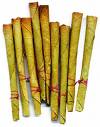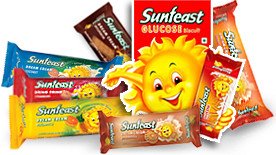Agency : TBWA
Brand Analysis Count : 365

Moser Baer started its operations by manufacturing time recorder units in collaboration with Maruzen Corporation of Japan. In 1998, the company diversified into manufacturing of 5.2 inch floppy disk. In 1999 the company went on to manufacturing of CD-ROMs and DVDs.
The Indian optical media industry is estimated to be around Rs 1500 crore. Moser Baer leads the market with a market share of around 40%. The brand is having a global share of around 20% in this industry.
The optical media storage industry is dominated by CD-ROMs. The trend is now moving towards DVD and latest Blu-Ray discs.
The CD/DVD industry is guided by the penetration of the respective disc drives . It is estimated that 75 % of the computers are sold along with the CD Drives and this factor have more impact on the sale of CDs at the consumer end.
If we look at the market evolution of these products, during the formative years, ordinary users never considered the CD drive as a part of the standard PC. CD Drives was considered as a luxury because of the high cost. This has severely restricted the popularity of CDs at the consumer end . CDs during those years was targeting the software segment.
When the CD drive price crashed, it became a part of the standard PC offering which paved the way for the popularity of CDs. Another big market for these products is in the entertainment sector.
Moser Baer operates in a market which is highly dynamic and volatile.This is a market which is full of disruptive innovations . One can never predict the lifecycle of a product. A small technological innovation can make a product irrelevant. It had happened in the case of Floppy Disks . The MP3 revolution has severely impacted the CD industry aswellas the entire music industry.
Hence to operate in such a volatile environment requires high flexibility in operations and strategy. The simple fact that Moser Baer was able to handle the Floppy to CD transition is a remarkable example of flexible product strategy. It takes corporate vision to identify the changes that are happening in the environment and then take a proactive step in addressing those issues.
It is not easy as we think. Take the example of CD replacing the Floppy Disk. The company has to first identify this as a disruptive innovation . Then they have to forecast the impact of this technology in their business. Then devise the strategy to handle that disruption. The problem here is timing. In technology marketing, timing is the key. We have seen big companies humbled by start-ups ( Microsoft Vs Google ) because the large firms fail to forecast the impact of these changing technologies on their business.
In the case of storage media disruptions are happening on a regular basis. We have seen Floppy Disk getting eliminated by CDs, CDs getting irrelevant by USB Disks, DVDs etc. There is heated argument whether DVD will be replaced by Blue-Ray discs
Look at the removable memory devises or the flask disks, these devices are increasingly making CDs irrelevant. These USB memory disks are portable , reusable and easy to use. These devices are a big competition for CD and DVDs. More over the various online file storing sites and file sharing sites makes life more dangerous for firms like Moser Baer.
So how will a company survive in such a very fluid environment.?
It calls for a very flexible product strategy. Such a strategy allows the managers to experiment and pull the company into different directions. Product Managers will be looking for emerging areas /technologies and will be investing in those new areas. Although this strategy is sexy, it is highly risky. Not all new technologies are disruptive. So it takes lot of wisdom and luck to spot and act on such a technology.
Last two quarters has been very bad for the company owing to the increase in the production cost and decrease in demand due to competition from other categories. One of the raw material for CD/DVDs is polycarbonate which is a byeproduct of oil industry. The rise in oil prices has increased the cost for this raw material.
It is this scenario which may have forced Moser Baer to undertake many related and unrelated diversification. In 2006, the company forayed into entertainment business. The company launched an entertainment division which focused on distribution of movie CD/DVD. The company procured around 10,000 movie titles and aggressively started distribution.
Moser Baer shocked the movie industry by launching movie CDs and DVDs for as low a price as Rs 28 and Rs 34 respectively. At that time, a DVD used to cost minimum Rs 150 and CDs at around Rs 80. The move made lot of sense because the expense for Moser Baer was limited to promotional and distributional expenses.
According to reports, Moser Baer adopted an FMCG model of distribution for these CDs. The reason was to drive the volumes in order to compensate for the low price. The low price of Moser Baer movie CDs was a deadly blow to the pirate- mafia which was a major threat to the entire movie industry.
This move of Moser Baer was complimented by the low priced DVD players that entered the Indian market. The price of a branded DVD player came to the level of 2000-5000 which enabled many households to own one.
Another diversification of Moser Baer was into the Rs 12000 crore PC peripheral market which include products like CD/DVD drives , hard disks, speakers etc. Moser Baer expects to corner 20 % of this lucrative market .
In the business market, Moser Baer has diversified into manufacturing of photo-voltaic cells which is used in harnessing solar energy.
A major unrelated diversification for this brand was into the consumer durables in 2008. Moser Baer entered the consumer durable space with a high decibel launch of LCD televisions and DVD players.
Watch the tvc here : Moser Baer
Although the corporate tagline for Moser Baer is " Rewriting the Future " , the company decided to have a seperate tagline " Ultra Life " for its consumer durable venture. The brand is projecting itself as the advanced fururistic technology brand. For the movie CD venture, the brand has another tagline " Hello Happiness ".
In a branding perspective, the same brand has three different positioning strategy in three different categories. Theoritically this will result in brand dilution.
I seriously doubt the logic behind Moser Baer entering a space where it has virtually no standing . It does not have the brand equity nor the marketing strength to fight the competition. In this space it will be fighting all the major consumer durable brands of the world like Sony, Philips, LG, Samsung, Onida, Panasonic and what not.
Moser Baer may be a well known brand in the CD category but it is a zero in the consumer durable space. The only advantage for the brand is the brand familiarity. Consumers have seen this brand but that is not sufficient to counter the competition of established brands like Sony.
Moser Baer is trying to fight the war using price as a proposition. The price of LCD TV is much lower than the established players. Hence the price + brand familiarity may give some head start for the brand.
Another serious issue for the brand will be the time and energy needed for Moser Baer to establish itself in the consumer durable space. The company may have to devote considerable resources , both money and managerial time ,to be successful as a consumer durable major. This will seriously impact the investment needed in its core business. In this period, when cash is the king, the brand may have to spend judiciously .
Moser Baer has also launched products like USB disks in order to pre-empt the competition from that category which makes more sense than the consumer durable venture. It could have spent more energy on establishing itself in the USB media space and even launch products similar to ipods.
It makes more sense if Moser Baer concentrated on Memory ,Storage and even PC peripherals space rather than spent valuable resources on highly competitive market like consumer durables












